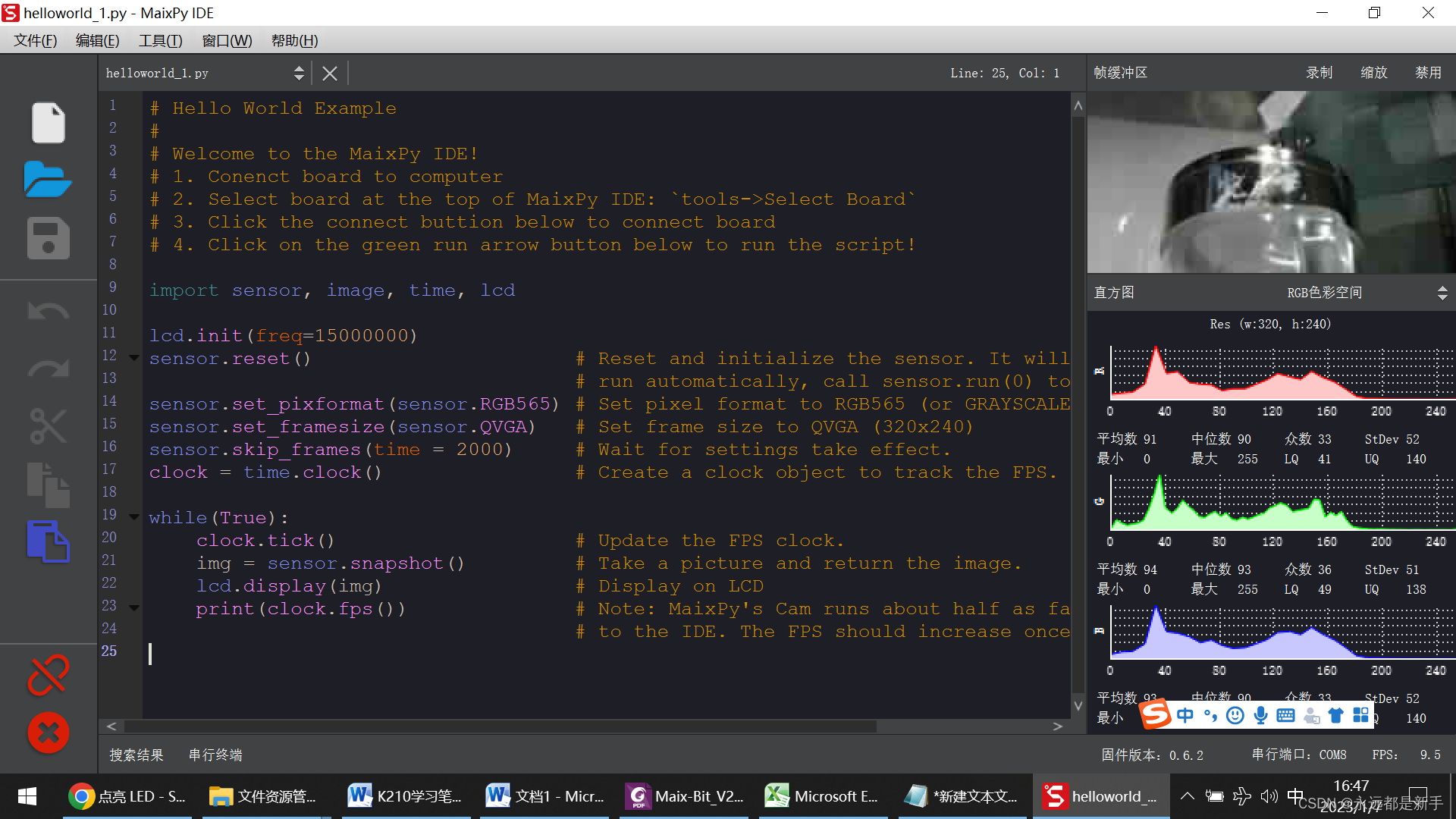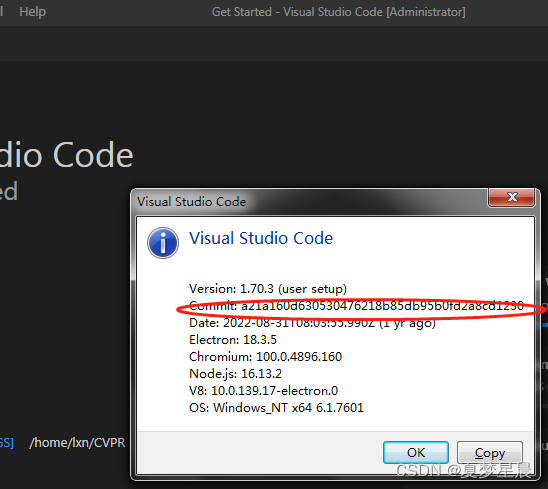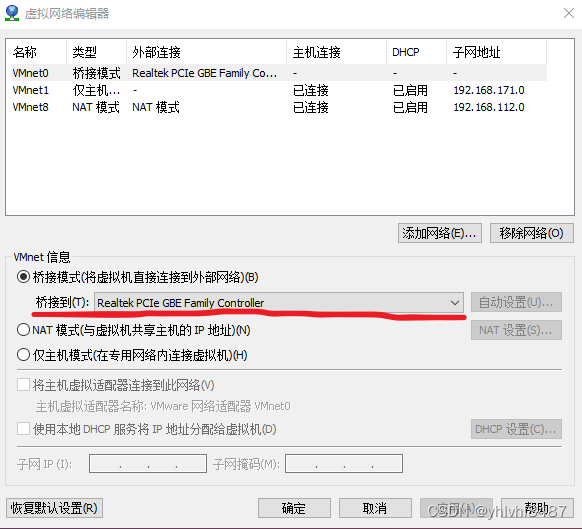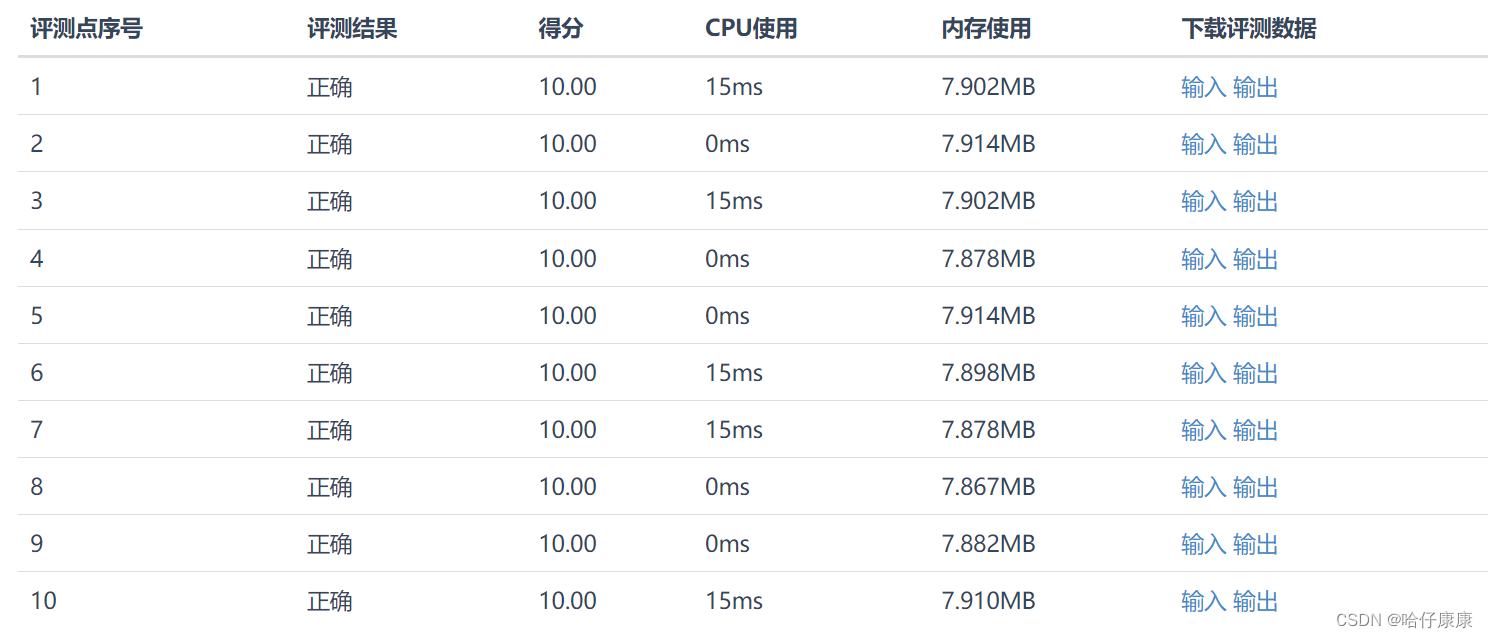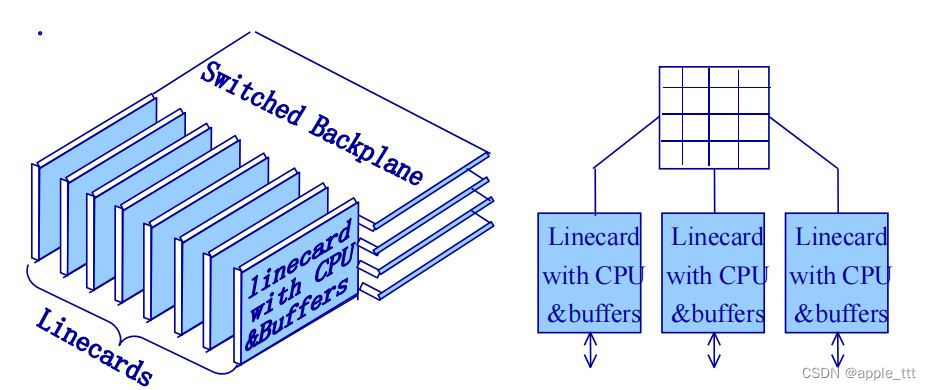文章目录
- openssl3.2 - osslsigncode工程的学习
- 概述
- 笔记
- 工程库地址
- 工程的编译
- osslsigncodeM工程文件列表
- osslsigncodeM工程搭建细节
- 原始工程实现的改动
- 自己封装的包含openssl和curl的实现
- osslsigncodeM工程命令行的用法
- 备注
- 学学作者怎么对签好的PE进行验签(code sgin)
- END
openssl3.2 - osslsigncode工程的学习
概述
github上有个osslsigncode工程, 可以对PE文件进行code sign签名和验签.
想在自己工程中, 对正在运行的的PE本身文件进行完整性校验, 应该能从osslsigncode工程中学到东西.
在看资料时, 看到一个逆向工程师, patch掉一个用土法进行EXE本身的完整性校验的案例.
这个案例, 程序里面自己算了本身的校验和, 然后和程序中预留的校验和进行比对, 这样很容易被别人搞掉.
好一些的方法是, 用osslsigncode工程里面这种用公版openssl的验签的方法, 不存在直接的比对.
发现不对了, 悄悄的不干活就是了.
如果逆向工程师硬要暴力patch, 后续再结合其他措施, 让被加密的配置文件不能正常解密, 达到程序不能让非正版用户使用的目的就行了.
笔记
工程库地址
https://github.com/mtrojnar/osslsigncode.git
工程的编译
作者的使用环境是在like-unix环境下, 他没有认真考虑使用者在windows环境下的编译.
用作者的脚本, 无法正常在(vs2019 + cmake)环境下编译通过. 编译脚本给的真的有问题.
主要是cmake + vcpkg的依赖太复杂, 要是像我重建的工程这样整简单一些(工程依赖项都是编译好的, 只考虑工程本身). 那工程的学习和使用者就方便太多了.
这个工程用了openssl3.1.x + curl作为组件, 其他是作者自己的实现.
openssl3.x接口都是兼容的, 我这里就使用openssl3.2.
openssl3.2我自己编译好了(openssl3.2 - 编译).
curl编译挺复杂的, 我直接用了官方的x64版(curl8.6.0 - CURLE_PEER_FAILED_VERIFICATION).
基于上面2个现成的组件(openssl3.2 + curl8.6.0), 自己复原了一个osslsigncode的VS2019X64工程, 命名为osslsigncodeM (M means modify)
osslsigncodeM工程文件列表
| .
| appx.c
| cab.c
| cat.c
| helpers.c
| helpers.h
| msi.c
| my_curl_lib.c
| my_curl_lib.h
| my_openSSL_lib.c
| my_openSSL_lib.h
| osslsigncode.c
| osslsigncode.h
| pe.c
| prj_files.txt
| prj_template.sln
| prj_template.vcxproj
| prj_template.vcxproj.filters
| prj_template.vcxproj.user
|
+---bin_x64
| case1.exe
| exe_for_sign_x64.exe.org
| libcrypto-3-x64.dll
| libcurl-x64.dll
| libssl-3-x64.dll
| my_app_cert.p12
| my_app_cert.pem
| my_app_key.pem
| my_log.txt
| my_root_ca_cert.pem
| my_zlib_1d3.dll
| osslsigncodeM.exe
| test_sign.cmd
|
\---doc
INSTALL.W32.md
NEWS.md
README.md
README_softhsm-example-token.md
TODO.md
osslsigncodeM工程搭建细节
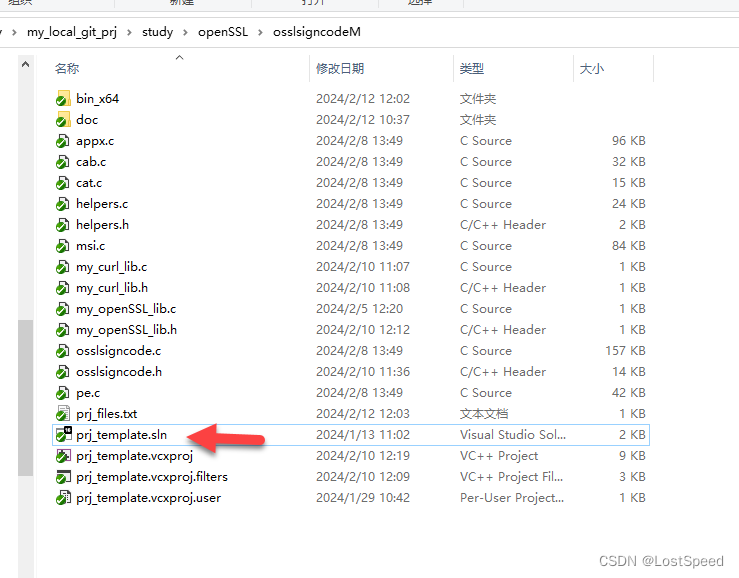
工程搭建完成后, 编译有一些警告, 都是作者打印信息时的字符串格式化的选项不合适, 不影响用, 不管了.
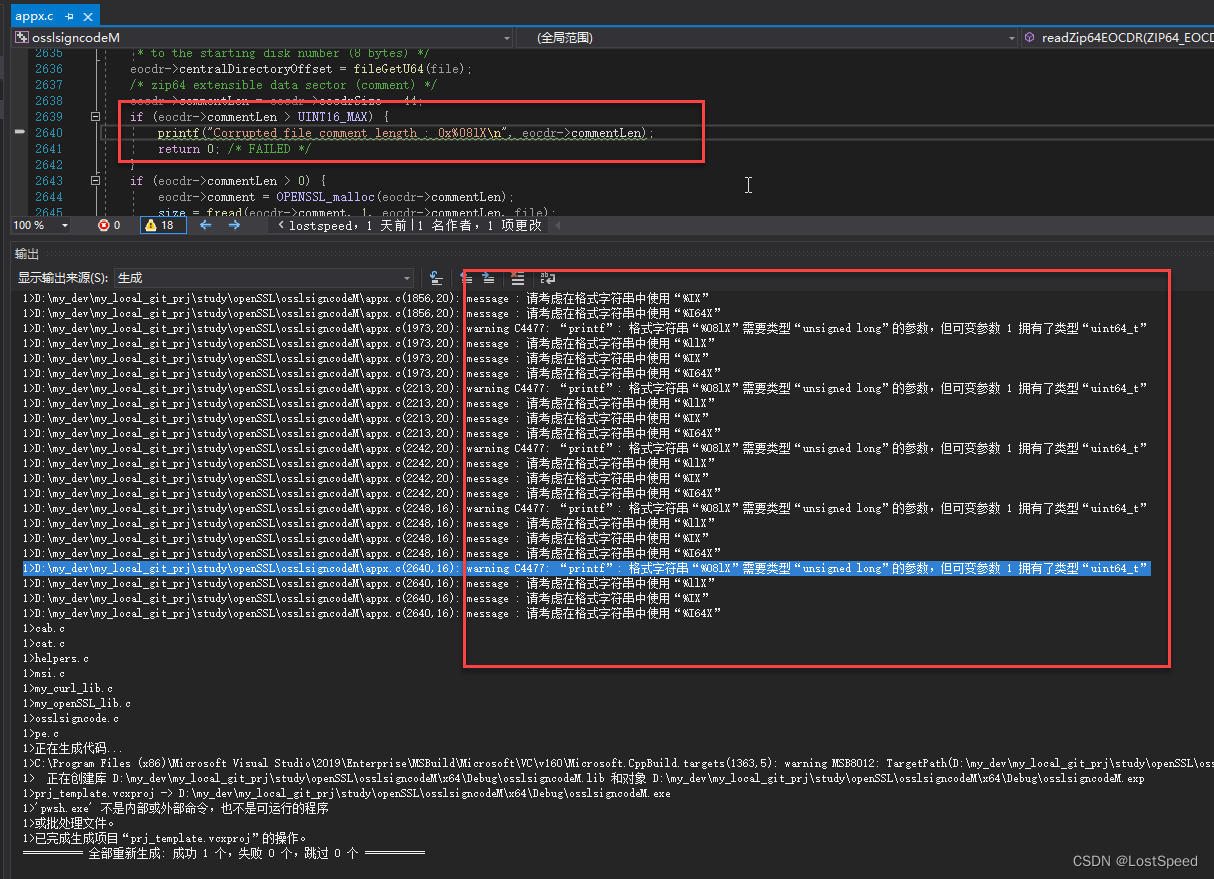
预处理选项中, 要加2个宏, 否则编译不过.
ENABLE_CURL
Z_SOLO
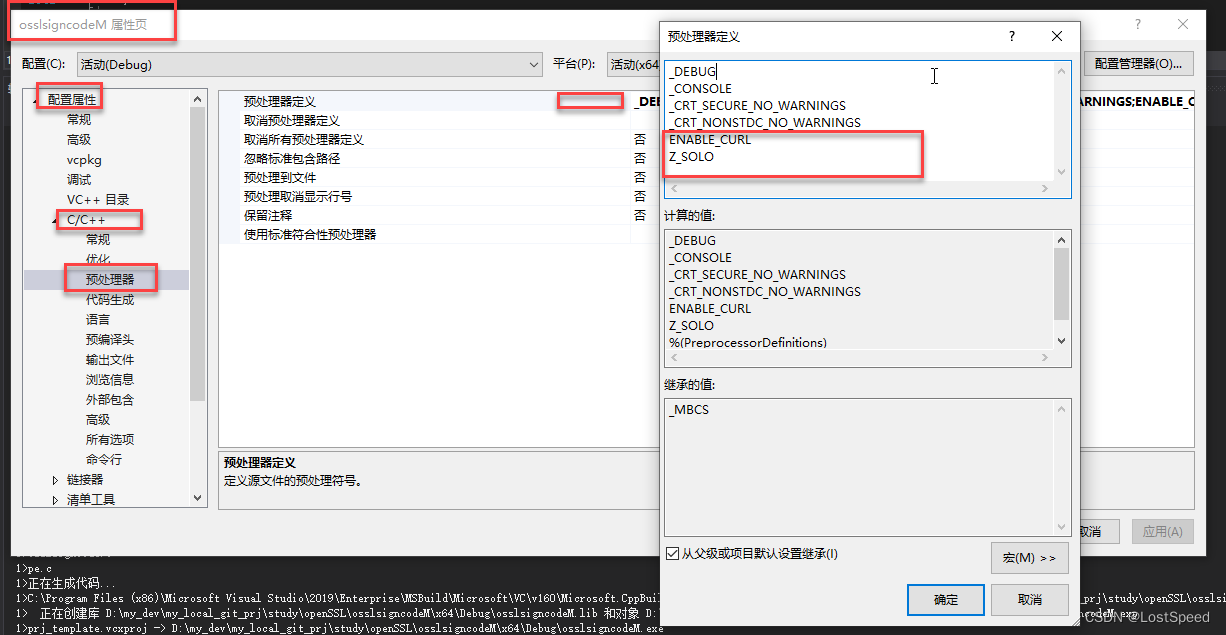
头文件包含路径 - 指定openssl和curl的头文件路径
.\;D:\my_dev\lib\openssl_3d2\include;D:\my_dev\lib\curl-8.6.0_1-win64-mingw\include
库文件包含路径 - 指定openssl, curl, zlib的库文件包换路径
zlib是openssl要用的, curl中用的zlib是静态包含的.
D:\my_dev\lib\openssl_3d2\lib;D:\my_dev\lib\curl-8.6.0_1-win64-mingw\lib;D:\my_dev\lib\zlib_1d3
输出文件路径改一下, 生成到工程目录下的单独文件夹中, 可以和中间输出文件分开, 方便调试和归档.
$(ProjectDir)\bin_x64\$(TargetName)$(TargetExt)
原始工程实现的改动
osslsigncode.h 要包含openssl和curl库, 需要加2句.
/*! \file osslsigncode.h
* Copyright (C) 2021-2023 Michał Trojnara <Michal.Trojnara@stunnel.org>
* Author: Małgorzata Olszówka <Malgorzata.Olszowka@stunnel.org>
*/
// add by ls
#include "my_openSSL_lib.h"
#include "my_curl_lib.h"
#define OPENSSL_API_COMPAT 0x10100000L
#define OPENSSL_NO_DEPRECATED
自己封装的包含openssl和curl的实现
/*!
\file my_openSSL_lib.h
*/
#ifndef __MY_OPENSSL_LIB_H__
#define __MY_OPENSSL_LIB_H__
#ifdef _WIN32
#include <WinSock2.h>
#pragma comment(lib, "ws2_32.lib") // for select()
#include <windows.h>
#pragma comment(lib, "libcrypto.lib")
#pragma comment(lib, "libssl.lib")
#pragma comment(lib, "my_zlib_1d3.lib")
#endif /* #ifdef _WIN32 */
// --------------------------------------------------------------------------------
// 开关宏 - begin
// --------------------------------------------------------------------------------
#define MY_USE_APPLINK
// --------------------------------------------------------------------------------
// 开关宏 - END
// --------------------------------------------------------------------------------
#endif /* #ifndef __MY_OPENSSL_LIB_H__ */
/*!
* \file D:\my_dev\my_local_git_prj\study\openSSL\nmake_test\test_c\prj_005_afalgtest.c\my_openSSL_lib.c
*/
#include "my_openSSL_lib.h"
#ifdef MY_USE_APPLINK
#include <openssl/applink.c> /*! for OPENSSL_Uplink(00007FF8B7EF0FE8,08): no OPENSSL_Applink */
#endif // #ifdef MY_USE_APPLINK
/*!
\file my_curl_lib.h
*/
#ifndef __MY_CURL_LIB_H__
#define __MY_CURL_LIB_H__
#include <curl/curl.h>
#pragma comment(lib, "libcurl.dll.a")
#endif /* #ifndef __MY_CURL_LIB_H__ */
/*!
* \file my_curl_lib.c
*/
#include "my_curl_lib.h"
osslsigncodeM工程命令行的用法
osslsigncode实现还没看, 主要试一下是否工程复原成功了. 如果工程搭建出来没有原始工程的效果, 还得找原因或放弃.
看osslsigncode的文档, 一共5个, 都有点用.

整理了一个脚本, 试了好使.

实验用到的证书, 都是自己前面做openssl实验(openssl3.2 - use openssl cmd create ca and p12)时准备好的.
脚本如下
@echo off
rem \file test_sign.cmd
rem 官方用法
rem osslsigncode sign -certs <cert-file> -key <der-key-file> -n "Your Application" -i http://www.yourwebsite.com/ -in yourapp.exe -out yourapp-signed.exe
rem osslsigncode sign -certs <cert-file> -key <key-file> -pass <key-password> -n "Your Application" -i http://www.yourwebsite.com/ -in yourapp.exe -out yourapp-signed.exe
rem osslsigncode sign -certs <cert-file> -key <key-file> -pass <key-password> -n "Your Application" -i http://www.yourwebsite.com/ -t http://timestamp.digicert.com -in yourapp.exe -out yourapp-signed.exe
rem osslsigncode sign -pkcs12 <pkcs12-file> -pass <pkcs12-password> -n "Your Application" -i http://www.yourwebsite.com/ -t http://timestamp.digicert.com -in yourapp.exe -out yourapp-signed.exe
rem osslsigncode.exe add -addUnauthenticatedBlob -in your_signed_file.exe -out out.exe
rem my_app_key.pem 口令 = pwd_app_222222, 配套证书 my_app_cert.pem
rem my_app_cert.p12 口令 = pwd_exp_333333
rem 自己的实际 case
rem osslsigncodeM.exe sign -certs my_app_cert.pem -key my_app_key.pem -n "Your Application" -i http://www.yourwebsite.com/ -in case1.exe -out yourapp-signed1.exe
rem osslsigncodeM.exe sign -certs my_app_cert.pem -key my_app_key.pem -pass pwd_app_222222 -n "Your Application" -i http://www.yourwebsite.com/ -in case1.exe -out yourapp-signed2.exe
rem osslsigncodeM.exe sign -certs my_app_cert.pem -key my_app_key.pem -pass pwd_app_222222 -n "Your Application" -i http://www.yourwebsite.com/ -t http://timestamp.digicert.com -in case1.exe -out yourapp-signed3.exe
rem osslsigncodeM.exe sign -pkcs12 my_app_cert.p12 -pass pwd_exp_333333 -n "Your Application" -i http://www.yourwebsite.com/ -t http://timestamp.digicert.com -in case1.exe -out yourapp-signed4.exe
rem osslsigncodeM.exe.exe add -addUnauthenticatedBlob -in your_signed_file4.exe -out out.exe
rem PE code sign 验签
osslsigncodeM.exe verify -CAfile my_root_ca_cert.pem -ignore-timestamp yourapp-signed4.exe
根据工程文档, osslsigncode的功能主要有3个.
- 对PE文件进行签名(code sign), 作者给了例子.
- 对PE文件进行验签(code sign), 作者没给例子, 自己猜读/实验, 搞定了.
- 对已经签名的PE文件附加一段1024bytes的数据, 作者给了例子.
对于第3个用法, 有可能杀毒软件有不好的提示, 如果没有特殊用场, 这个用法还是别用, 正常的用程序来实现, 而不是在签名后再附加数据. 正常程序都不会这么玩.
对于第1个用法, 除非自己写签名(code sign)程序, 正常的都是用第三方程序来签名. 这个我不用.
我比较关注的是第2个用法, 学学人家怎么用openssl来验签(code sign).
我自己实验整理出来的验签命令行, 加了-ignore-timestamp, 不验证时间戳, 对于我自己的工程应用就够了.
osslsigncode的细节用法, 远不止作者列出的这2种(签名, 附加数据), e.g. 验签
因为不是作者, 如果感兴趣, 只能自己去看命令行参数和程序实现, 自己去实验了.
对于开源工程, 小白大致只能看作者发布的文档, 作者没说的, 又看着大概好像有的功能, 只能自己去工程中去深挖了.
D:\my_dev\my_local_git_prj\study\openSSL\osslsigncodeM\bin_x64>osslsigncodeM.exe --help
osslsigncode custom build, using:
OpenSSL 3.2.0 23 Nov 2023 (Library: OpenSSL 3.2.0 23 Nov 2023)
libcurl/8.6.0 LibreSSL/3.8.2 zlib/1.3.1 brotli/1.1.0 zstd/1.5.5 WinIDN libpsl/0.21.5 libssh2/1.11.0 nghttp2/1.59.0 ngtcp2/1.2.0 nghttp3/1.1.0
osslsigncode is a small tool that implements part of the functionality of the Microsoft
tool signtool.exe - more exactly the Authenticode signing and timestamping.
It can sign and timestamp PE (EXE/SYS/DLL/etc), CAB and MSI files,
supports getting the timestamp through a proxy as well.
osslsigncode also supports signature verification, removal and extraction.
--version | -v = print osslsigncode version and usage
--help = print osslsigncode help menu
Commands:
add = add an unauthenticated blob or a timestamp to a previously-signed file
attach-signature = sign file using a given signature
extract-signature = extract signature from a previously-signed file
remove-signature = remove sections of the embedded signature on a file
sign = digitally sign a file
verify = verifies the digital signature of a file
For help on a specific command, enter osslsigncodeM.exe <command> --help
Usage: osslsigncodeM.exe
[ --version | -v ]
[ --help ]
[ sign ] ( -certs | -spc <certfile> -key <keyfile> | -pkcs12 <pkcs12file> |
[ -pkcs11engine <engine> ] -pkcs11module <module> -pkcs11cert <pkcs11 cert id> |
-certs <certfile> -key <pkcs11 key id>)
[ -nolegacy ]
[ -pass <password> [ -readpass <file> ]
[ -ac <crosscertfile> ]
[ -h {md5,sha1,sha2(56),sha384,sha512} ]
[ -n <desc> ] [ -i <url> ] [ -jp <level> ] [ -comm ]
[ -ph ]
[ -t <timestampurl> [ -t ... ] [ -p <proxy> ] [ -noverifypeer ]
[ -ts <timestampurl> [ -ts ... ] [ -p <proxy> ] [ -noverifypeer ] ]
[ -TSA-certs <TSA-certfile> ] [ -TSA-key <TSA-keyfile> ]
[ -TSA-time <unix-time> ]
[ -time <unix-time> ]
[ -addUnauthenticatedBlob ]
[ -nest ]
[ -verbose ]
[ -add-msi-dse ]
[ -pem ]
[ -in ] <infile> [-out ] <outfile>
extract-data [ -pem ]
[ -h {md5,sha1,sha2(56),sha384,sha512} ]
[ -ph ]
[ -add-msi-dse ]
[ -in ] <infile> [ -out ] <datafile>
add [-addUnauthenticatedBlob]
[ -t <timestampurl> [ -t ... ] [ -p <proxy> ] [ -noverifypeer ]
[ -ts <timestampurl> [ -ts ... ] [ -p <proxy> ] [ -noverifypeer ] ]
[ -TSA-certs <TSA-certfile> ] [ -TSA-key <TSA-keyfile> ]
[ -TSA-time <unix-time> ]
[ -h {md5,sha1,sha2(56),sha384,sha512} ]
[ -index <index> ]
[ -verbose ]
[ -add-msi-dse ]
[ -in ] <infile> [ -out ] <outfile>
attach-signature [ -sigin ] <sigfile>
[ -CAfile <infile> ]
[ -CRLfile <infile> ]
[ -TSA-CAfile <infile> ]
[ -TSA-CRLfile <infile> ]
[ -time <unix-time> ]
[ -h {md5,sha1,sha2(56),sha384,sha512} ]
[ -require-leaf-hash {md5,sha1,sha2(56),sha384,sha512}:XXXXXXXXXXXX... ]
[ -nest ]
[ -add-msi-dse ]
[ -in ] <infile> [ -out ] <outfile>
extract-signature [ -pem ]
[ -in ] <infile> [ -out ] <sigfile>
remove-signature [ -in ] <infile> [ -out ] <outfile>
verify [ -in ] <infile>
[ -c | -catalog <infile> ]
[ -CAfile <infile> ]
[ -CRLfile <infile> ]
[ -TSA-CAfile <infile> ]
[ -TSA-CRLfile <infile> ]
[ -index <index> ]
[ -ignore-timestamp ]
[ -time <unix-time> ]
[ -require-leaf-hash {md5,sha1,sha2(56),sha384,sha512}:XXXXXXXXXXXX... ]
[ -verbose ]
D:\my_dev\my_local_git_prj\study\openSSL\osslsigncodeM\bin_x64>
备注
如果输出的路径自己改了, 调试时的命令, 也要改成自己实际输出的那个EXE全路径, 否则VS2019找不到要调试的程序.
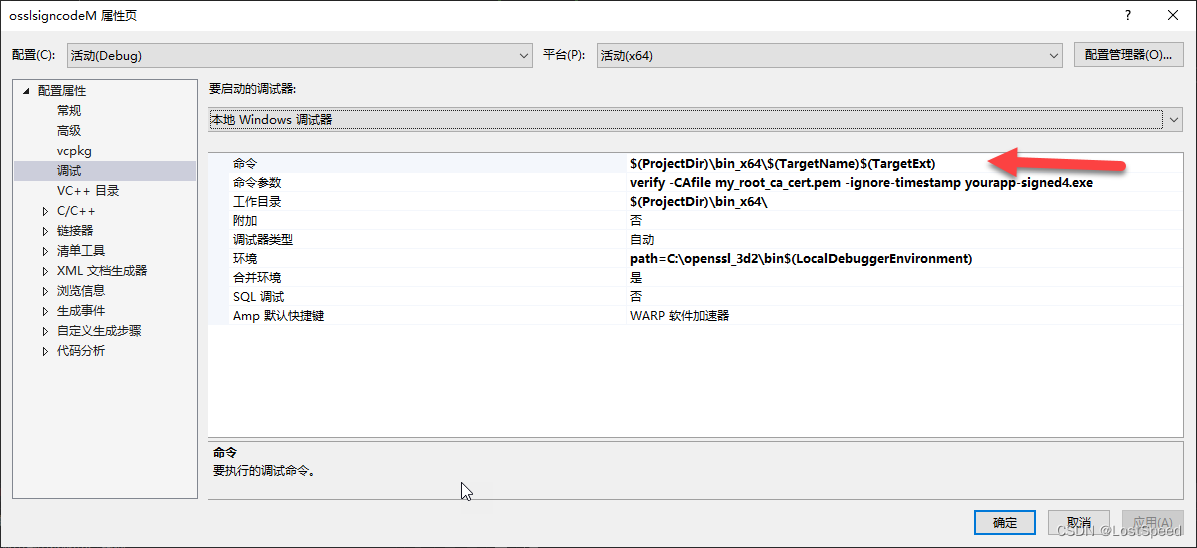
学学作者怎么对签好的PE进行验签(code sgin)
@todo
